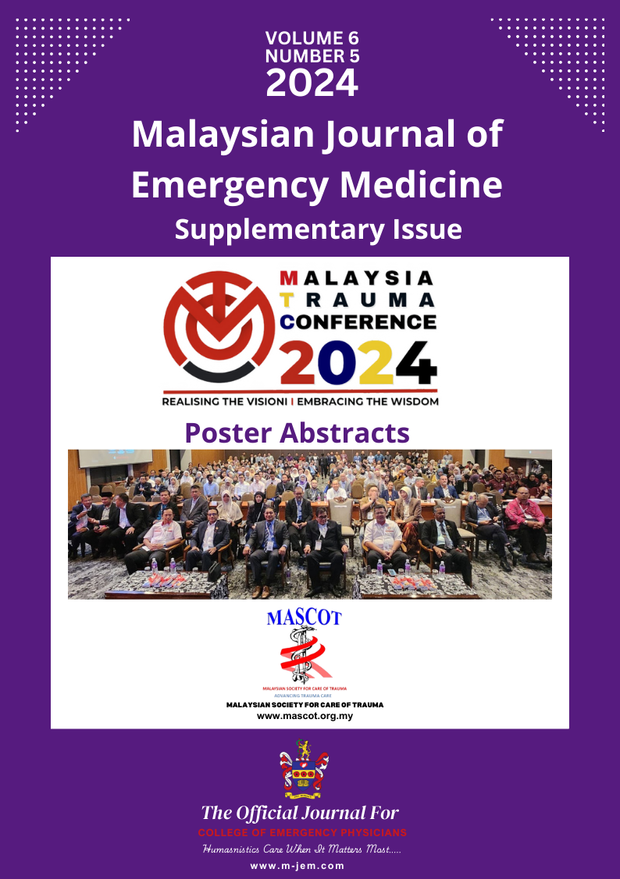A26 Bamboo Spine Fracture - A Case Of Chalk Stick Fracture In Ankylosing Spondylitis After Trivial Injury
Main Article Content
Abstract
INTRODUCTION
Ankylosing spondylitis (AS) is a chronic inflammatory joint disease primarily affecting the axial skeleton, characterized by fusion of facet joints and intervertebral discs, leading to a rigid, kyphotic ‘bamboo spine’. This rigidity significantly increases the susceptibility to vertebral fractures following trauma. We present a case of 65 years old with underlying AS sustained significant spinal fracture following trauma.
CASE DESCRIPTION
65-year-old man with underlying AS involved in a motor vehicle accident while riding a motorcycle and complained of persistent back pain and numbness over the right lower limb. Lower cervical and upper thoracic regions were tender on examination with neurological deficits up to T4 level. He also developed hypotensive episode with normal heart rate necessitating intravenous fluid resuscitation and low dose single vasopressor after haemorrhagic shock had been ruled out. Computed tomography (CT) scan of spine showed a T2 fused vertebral fracture and fracture of the left transverse process of T1. Urgent Magnetic Resonance Imaging (MRI) of spine confirmed these findings and additional spinal cord oedema around T1/T2 level and dislocation at the S1/S2 level was identified.
DISCUSSION
AS associated spinal fusion and ossification increase the risk of chalk stick fractures, as reduced spine flexibility makes the spine more vulnerable to fracture, especially under traumatic conditions. CT scans provide detailed bony images essential for fracture identification due to their superior resolution. MRI , being sensitive to soft tissue changes, is crucial for detecting bone marrow oedema and assessing acute fractures comprehensively. Effective management of fractures in AS involves immediate pain relief, stabilization measures, potential surgical interventions for unstable fractures or neurological compromise and comprehensive rehabilitation to optimize long- term outcomes.
CONCLUSION
Patients with AS face a heightened risk of acute spinal fractures, largely attributed to osteoporosis and spinal rigidity. Hence, a high suspicious of spinal injuries in AS patients presenting with trauma to the emergency department should be maintained and CT scan is a choice modality for the diagnosis.
Metrics
Article Details

This work is licensed under a Creative Commons Attribution-NonCommercial 4.0 International License.

